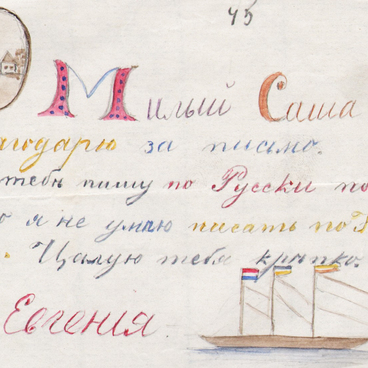Until the beginning of the 20th century, holistic healers, healers, doctors were the main carriers of medical knowledge. For average people, the idea of first aid in any situation boiled down to ‘bandaging with what God sent, and trusting in God’. First aid techniques were not taught to anyone except soldiers, but they received only the simplest skills.
In this respect, the brochure ‘First Aid in Accidents Before the Arrival of the Doctor, ’ which was published by princess Eugenia of Oldenburg in 1894, was very useful. In it, the author described in a simple and understandable language the methods of first aid for various injuries, poisoning and other life-threatening situations — everything that can and must be done before the doctor arrives. The book was intended not only for soldiers and sisters of charity, but also for average people who could apply that knowledge in everyday life.
The brochure was compiled by Dr. Heinrich Turner — an orthopedic surgeon, teacher of the course ‘First Aid in Accidents’ at the Medical-Surgical Academy, author of more than 200 scientific papers, including monographs ‘Wound Dressing’ and ‘Atlas of Injuries and Diseases of the skeleton.’ Turner became the first physician in Russia who pointed out the need for systematic state aid to disabled children with diseases of the musculoskeletal system. At his initiative, special orphanages and charity homes were opened for such children, where they were not only treated, but also raised, and also taught physical labor, which their health condition allowed. In 1900, Heinrich Turner founded the first department and clinic of orthopedics in Russia.
The book ‘First Aid in Accidents Before the Arrival of the Doctor’ was released in the foolscap octavo format — ‘less than average.’ It was convenient to take it with on the road, to keep it at hand by sisters of charity at hospital or by soldiers among personal belongings. The language of the edition is Russian in the pre-reform spelling, but given names and quotes in the preface are given in German. The text is accompanied by color illustrations depicting basic first aid techniques in different cases. Each page with drawings bears a facsimile signature of the artist.
In this respect, the brochure ‘First Aid in Accidents Before the Arrival of the Doctor, ’ which was published by princess Eugenia of Oldenburg in 1894, was very useful. In it, the author described in a simple and understandable language the methods of first aid for various injuries, poisoning and other life-threatening situations — everything that can and must be done before the doctor arrives. The book was intended not only for soldiers and sisters of charity, but also for average people who could apply that knowledge in everyday life.
The brochure was compiled by Dr. Heinrich Turner — an orthopedic surgeon, teacher of the course ‘First Aid in Accidents’ at the Medical-Surgical Academy, author of more than 200 scientific papers, including monographs ‘Wound Dressing’ and ‘Atlas of Injuries and Diseases of the skeleton.’ Turner became the first physician in Russia who pointed out the need for systematic state aid to disabled children with diseases of the musculoskeletal system. At his initiative, special orphanages and charity homes were opened for such children, where they were not only treated, but also raised, and also taught physical labor, which their health condition allowed. In 1900, Heinrich Turner founded the first department and clinic of orthopedics in Russia.
The book ‘First Aid in Accidents Before the Arrival of the Doctor’ was released in the foolscap octavo format — ‘less than average.’ It was convenient to take it with on the road, to keep it at hand by sisters of charity at hospital or by soldiers among personal belongings. The language of the edition is Russian in the pre-reform spelling, but given names and quotes in the preface are given in German. The text is accompanied by color illustrations depicting basic first aid techniques in different cases. Each page with drawings bears a facsimile signature of the artist.

